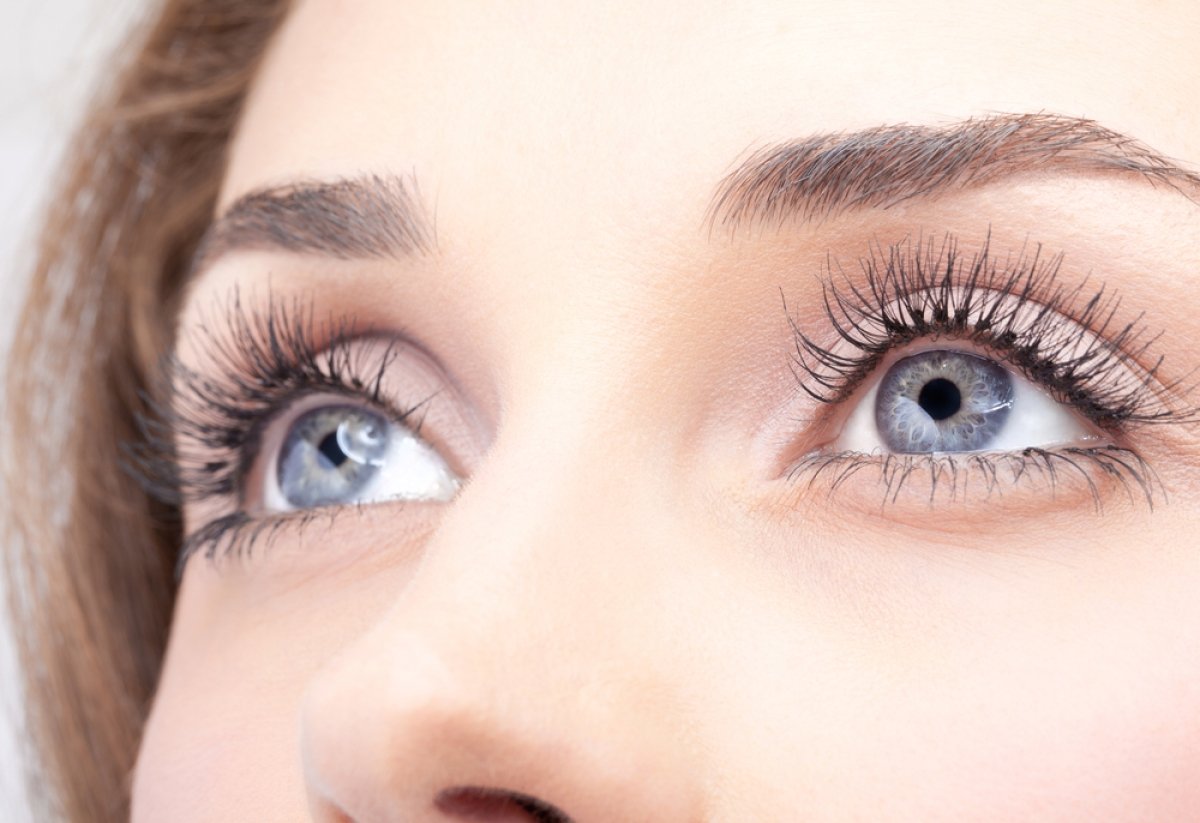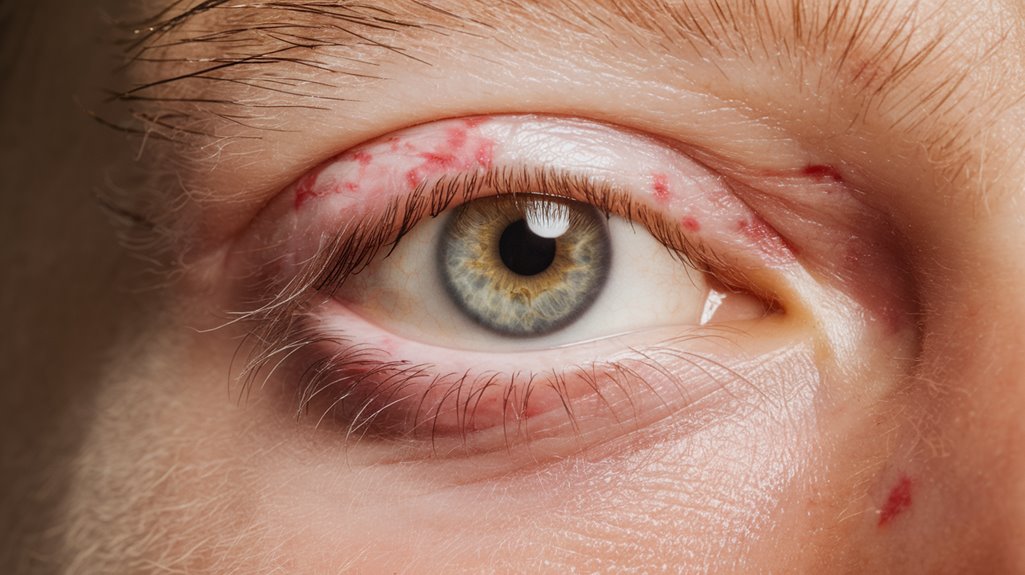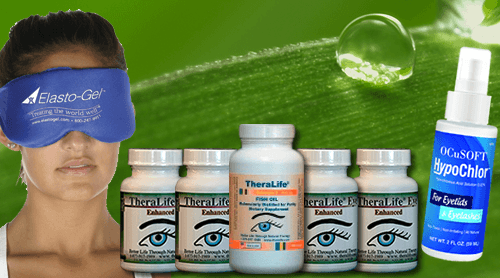Blepharitis is a prevalent condition characterized by inflammation and irritation of the eyelids, often resulting from bacterial overgrowth or gland dysfunction. Theralife.com offers a range of products designed to alleviate blepharitis symptoms and improve eyelid health. Their comprehensive treatment approach includes promoting strict eyelid hygiene and using specific products that aid in reducing inflammation and discomfort. Theralife's offerings are tailored to support natural healing processes and prevent recurring episodes, thereby enhancing the overall well-being of individuals suffering from this ocular issue.
Key Takeaways
- Blepharitis is an inflammation of the eyelid margins, often caused by bacteria or gland dysfunction.
- Symptoms include red, irritated eyelids, crusting, burning, itching, and a gritty eye sensation.
- Effective management involves maintaining eyelid hygiene and using warm compresses and appropriate cleansers.
- Treatment may include antibiotics, omega-3 supplements, and artificial tears for symptom relief.
- Seek professional help for persistent symptoms, blurred vision, or frequent flare-ups despite home treatments.
What Is Blepharitis?
Blepharitis is a common ocular condition characterized by inflammation of the eyelid margins. This condition may present as red, irritated eyelids with crusting at the lash line.
In clinical practice, you'll find that proper eyelid hygiene is paramount to managing blepharitis. An effective blepharitis overview involves understanding that this chronic condition often results from bacterial colonization or dysfunction of the meibomian glands.
Patients frequently experience symptoms like burning, itching, or a gritty sensation in the eyes. Regular cleansing of the eyelid margins, using warm compresses and gentle scrubbing, is essential to alleviate these symptoms and prevent recurrence.
Encouraging patients to adopt a consistent eyelid hygiene routine can markedly improve their quality of life and reduce inflammation effectively. For optimal results, patients may consider using products like the Avenova eyelid cleanser to maintain eyelid hygiene post-compress.
Types of Blepharitis
You're examining the two main types of blepharitis: anterior and posterior. Anterior blepharitis often arises from bacterial colonization or scalp dandruff affecting the eyelid margin. In contrast, posterior blepharitis is frequently linked to dysfunction of the meibomian glands, leading to eyelid inflammation and ocular surface irritation. Approximately 30% of chronic cases involve Demodex mites, which can exacerbate symptoms and complicate treatment.
Anterior Blepharitis Causes
Anterior blepharitis, a common inflammatory condition of the eyelid margins, primarily results from two main causes: bacterial colonization, especially by Staphylococcus species, and seborrheic dermatitis. Effective eyelid hygiene is essential in preventing bacteria proliferation, which exacerbates inflammation. When bacteria proliferate, they release toxins that irritate the eyelid margins, leading to redness, swelling, and discomfort. Staphylococcus species are often found on the skin, and their overgrowth can disrupt the delicate balance of the eyelid's ecosystem. Seborrheic dermatitis, another culprit, is linked to excessive oil production and dandruff, contributing to the inflammatory process. Chronic dry eyes, a significant risk factor for blepharitis, create a cycle of inflammation that can worsen the condition. Regular cleansing and maintenance of the eyelids can considerably reduce the risk of anterior blepharitis by controlling these underlying factors, ensuring a healthier ocular surface.
Posterior Blepharitis Differences
While anterior blepharitis focuses on the outer eyelid margin, posterior blepharitis affects the inner edge where the eyelid meets the eye. This condition often results from dysfunction of the meibomian glands, leading to insufficient lipid secretion.
You might notice posterior blepharitis symptoms such as redness, irritation, and blurred vision due to an unstable tear film.
Effective posterior blepharitis treatment requires a multifaceted approach:
- Warm compresses: Apply them regularly to liquefy the meibomian gland secretions, enhancing gland function.
- Lid hygiene: Maintain rigorous eyelid cleaning to reduce bacterial colonization and inflammation.
- Medications: Topical or systemic antibiotics may be prescribed to manage bacterial involvement and decrease inflammation.
Posterior blepharitis is often associated with inflammatory ocular disorders that can exacerbate symptoms if not appropriately managed. Understanding and addressing these elements can greatly improve outcomes for those affected by posterior blepharitis.
Common Symptoms of Blepharitis
When evaluating blepharitis, you'll frequently encounter symptoms such as eyelid margin redness and irritation, which are indicative of inflammation. Clinical evidence suggests that crusty eyelid edges often accompany these signs, contributing to discomfort and potential eyelid dysfunction. Recognizing these symptoms is essential for accurate diagnosis and effective management of the condition. It is crucial to implement proper hygiene practices to prevent flare-ups and manage symptoms effectively.
Redness and Irritation
Redness and irritation are hallmark symptoms of blepharitis, often resulting from inflammation along the eyelid margins.
You might notice these symptoms due to several redness triggers including bacterial infections, seborrheic dermatitis, or meibomian gland dysfunction.
Addressing these triggers is vital for effective irritation management.
Clinically, managing these symptoms involves a combination of hygiene practices and, in some cases, pharmacological treatments.
Recommended steps include:
- Eyelid Hygiene: Regular cleaning with a gentle cleanser to remove debris and reduce bacterial load.
- Warm Compresses: Apply to the eyelids to loosen crusts and improve meibomian gland function.
- Topical Antibiotics or Steroids: Prescribed when bacterial involvement or severe inflammation is evident.
Blepharitis can also be exacerbated by contaminated eye makeup, leading to worsened symptoms and possible conjunctivitis.
Crusty Eyelid Edges
Although blepharitis presents with various symptoms, crusty eyelid edges are among the most recognizable. This symptom occurs due to the accumulation of crusty discharge along the lash line, often resulting from sebaceous gland dysfunction or bacterial colonization. Clinically, you might notice these crusts upon waking, as they adhere to the eyelid margins due to overnight secretions. It's crucial to maintain proper eyelid hygiene to manage and mitigate these symptoms effectively. Regular cleansing removes debris and reduces bacterial load, alleviating discomfort and preventing further complications. Effective eyelid hygiene involves using warm compresses and gentle lid scrubs, which can help dissolve crusts and unclog glands. Omega-3 fatty acids offer anti-inflammatory benefits, with clinical studies supporting their supplementation for symptom improvement. Addressing crusty eyelid edges promptly guarantees better overall ocular health and symptom relief.
Identifying the Causes of Blepharitis
Blepharitis, a common ocular condition, arises from a variety of underlying causes that can considerably impact eyelid health. Understanding these blepharitis triggers is vital for effective management and prevention.
Poor eyelid hygiene often exacerbates symptoms, leading to inflammation and discomfort. Clinically, several factors contribute to blepharitis:
- Bacterial colonization: Staphylococcus species frequently colonize the eyelid margins, causing irritation and inflammation.
- Seborrheic dermatitis: This dermatological condition results in abnormal skin flora and can provoke eyelid inflammation.
- Meibomian gland dysfunction (MGD): Chronic blockage or dysfunction of these glands disrupts the lipid layer of the tear film, further aggravating blepharitis.
Daily application of warm compresses can help to loosen clogged oils in the eyelid glands, reducing inflammation and improving tear quality.
To mitigate these factors, implementing a consistent eyelid hygiene routine is essential.
Regular cleaning helps maintain a balanced ocular surface and reduces the risk of recurrent episodes.
Diagnosis and Evaluation
How can clinicians effectively assess blepharitis to guarantee accurate diagnosis? Start by gathering a thorough patient history, focusing on symptoms like itching, redness, and crusting. Clinicians utilize diagnostic methods such as slit-lamp examination to inspect eyelid margins. These assessments help identify inflammation and differentiate between anterior and posterior blepharitis. Tear film analysis may also be employed to evaluate tear stability and composition, which can be affected in blepharitis. Differentiating between types of blepharitis is crucial for effective treatment and management strategies.
| Diagnostic Method | Purpose |
|---|---|
| Patient History | Identify symptoms and medical background |
| Slit-Lamp Examination | Inspect eyelid margins and tear film |
| Tear Film Analysis | Evaluate tear stability and composition |
| Differential Diagnosis | Distinguish from similar ocular conditions |
Effective Treatment Options
When managing blepharitis, it's essential to implement a detailed treatment plan that addresses both symptoms and underlying causes.
Effective treatment options should incorporate evidence-based strategies and clinical insights to improve patient outcomes. Consider the following:
- Natural Remedies: Utilize warm compresses, which can alleviate discomfort by loosening crusts and enhancing meibomian gland function. Studies support warm compress therapy for increasing tear film stability and reducing inflammation, making it a crucial part of a comprehensive treatment plan.
- Lifestyle Changes: Maintain eyelid hygiene through regular cleansing with diluted baby shampoo or specialized eyelid cleansers to decrease bacterial load.
- Pharmacologic Interventions: Topical antibiotics, such as azithromycin, may be prescribed to target bacterial overgrowth; however, consult with a healthcare professional for personalized care.
Integrating these approaches can enhance therapeutic efficacy and reduce recurrence, ensuring thorough blepharitis management.
Home Remedies for Symptom Relief
While managing blepharitis at home, leveraging simple yet effective remedies can greatly alleviate symptoms.
Implementing natural remedies such as warm compresses can help in softening and removing crusts from eyelid margins, enhancing comfort. Gently scrub the eyelids with diluted baby shampoo to maintain eyelid hygiene and reduce bacterial load, thereby mitigating inflammation.
Additionally, lifestyle changes like increasing omega-3 fatty acid intake through diet or supplements may improve meibomian gland function, reducing symptoms. Consistent eyelid cleaning routines and maintaining ocular moisture with artificial tears can further support symptom management.
Evidence suggests these strategies can improve clinical outcomes, providing relief from irritation and redness. Regular execution of these measures can result in significant symptomatic relief from blepharitis without pharmacological interventions.
Preventative Measures to Avoid Flare-Ups
To effectively prevent blepharitis flare-ups, it's crucial to establish a thorough eyelid hygiene routine. Consistent hygiene practices can reduce the risk of chronic inflammation.
Consider these evidence-based measures:
- Daily Eyelid Cleansing: Use a gentle, non-irritating cleanser to remove debris and bacteria from the eyelid margins. Regular cleaning minimizes the accumulation of oils and potential irritants.
- Dietary Changes: Incorporate omega-3 fatty acids into your diet, found in foods like fish and flaxseeds, to potentially reduce inflammation and promote ocular health.
- Avoidance of Triggers: Identify and minimize exposure to environmental factors, such as allergens or pollutants, that may exacerbate symptoms.
Maintaining these practices can substantially decrease blepharitis flare-ups, contributing to better eyelid health and comfort.
When to Seek Professional Help
How do you know it's time to consult a healthcare professional for blepharitis? Recognizing the signs of urgency is vital.
If you experience persistent redness, swelling, or pain in your eyelids that doesn't improve with basic hygiene measures, it's time to seek expert advice.
When to consult is essential if blurred vision or loss of eyelashes occurs, as these may indicate a more severe underlying condition.
Additionally, if your symptoms worsen or recur frequently despite treatment, professional evaluation is warranted.
Clinical guidelines suggest immediate consultation if you develop a fever or if the inflammation spreads beyond the eyelid.
A timely professional assessment can prevent complications and guide effective management strategies, ensuring your ocular health is safeguarded thoroughly.
Frequently Asked Questions
Can Stress or Anxiety Contribute to Blepharitis?
When life's pressures become a bit too overwhelming, your body's response can manifest in curious ways.
Stress and anxiety aren't direct culprits for blepharitis, but they do play supporting roles by compromising your immune system.
Effective stress management and anxiety relief strategies can help keep your immune defenses strong.
This clinical perspective highlights the importance of a balanced lifestyle to potentially mitigate the frequency or severity of blepharitis symptoms.
Are There Any Dietary Changes That Can Help Manage Blepharitis?
When managing blepharitis, consider incorporating omega fatty acids into your diet, as they're known to reduce inflammation. You should focus on foods like fish, flaxseeds, and walnuts.
Additionally, effective hydration strategies are essential. Staying well-hydrated supports tear production, which can alleviate symptoms. Consume plenty of water and limit dehydrating beverages like caffeine.
Clinical evidence suggests these dietary adjustments can contribute greatly to managing blepharitis symptoms effectively from a clinical perspective.
Is Blepharitis Linked to Other Eye Conditions Like Dry Eye Syndrome?
Yes, blepharitis is indeed linked to other eye conditions, such as dry eye syndrome.
Blepharitis causes inflammation along the eyelid margins, potentially affecting tear production and stability, which can exacerbate dry eye symptoms.
The overlapping nature of blepharitis symptoms like redness, irritation, and crusting with dry eye syndrome can complicate diagnosis.
Clinically, addressing the underlying causes of blepharitis is essential for managing concurrent conditions and alleviating discomfort effectively.
Can Blepharitis Affect Vision Clarity or Quality?
Did you know that up to 37% of people with blepharitis report vision symptoms like blurriness?
Blepharitis can indeed affect your vision clarity or quality. It often causes inflammation leading to irritated, swollen eyelids.
Poor eyelid hygiene exacerbates these symptoms, making it hard to focus. Consistent eyelid hygiene is essential in managing these symptoms, minimizing inflammation, and preserving your vision quality.
Always consult your eye care specialist for tailored advice.
Is It Safe to Wear Contact Lenses With Blepharitis?
Wearing contact lenses with blepharitis isn't typically recommended due to the risk of exacerbating blepharitis symptoms.
If you choose to wear them, prioritize strict contact lens hygiene to prevent further irritation or infection.
Evidence suggests that lenses can trap debris and bacteria, worsening eyelid inflammation.
Regular cleaning and replacing lenses as per guidelines can mitigate risks, but consult with an eye care specialist for personalized advice before proceeding.
Conclusion
You've explored the intricate realm of blepharitis, gaining insight into its various forms, symptoms, and causes. Interestingly, about 37% of ophthalmology patients encounter blepharitis symptoms at some point. Accurate diagnosis and effective treatment options, such as those offered by TheraLife, are crucial in managing this prevalent condition. TheraLife's products, known for their natural and comprehensive approach, help alleviate symptoms and promote eye health. They also emphasize prevention through lifestyle adjustments and home remedies. Regular monitoring of symptoms and consulting healthcare professionals when necessary ensures optimal eye health and prevents future flare-ups.




